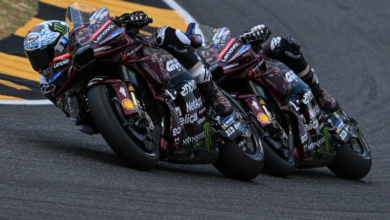September 3, 2007 – Answers to three vital questions every dealer will face
At a recent meeting with some individuals considering investing to back an acquisition of a Harley-Davidson dealership, some hard questions were asked that every dealer I know would be well served to answer. What follows are the questions posed to me and my answers.
First, by way of background, what we do at Motorcycle Capital Company LLC is arrange funding for proven and motivated managers who have the ability to be good motorcycle dealers but lack the large amount of money now required. Even if they could qualify for the needed loans, the debt amount would exceed OEM debt limitations as the debt service would be beyond what the dealership operation could cover. So we bring in equity investment. They are repaid with a defined share of the profits, and the operator gets a true “sweat equity” and owns 100 percent of the dealership in seven years or less.
Everything is built around the forward earnings exceeding trailing earnings. We have a basic operating plan and model that has been proven to work and has to be followed, and that is where the questions start with investors, particularly if they are from outside the industry.
So, just what are you going to do, and if the solution is so straight forward, why aren’t all the dealers doing it?
Ramping up sales going forward first and foremost requires we install tracking and have an accurate traffic count. This information drives all of our planning. We assume a level of traffic and know what the conversion rate should be. We either need to get more traffic or do a better job with what we are getting.
My estimate is that less than 10 percent of the motorcycle dealers in the U.S. have means to gather or the ability to enforce the collection of traffic information. There is no piece of information more important and nothing that is harder to get. Fundamentally you are asking for information that salespeople really do not want to provide. It cannot be an option. Compliance is a job requirement, to the same extent that ringing up P&A sales on the cash register is.
We would never consider an operating partner as a candidate unless he/she has a history of making a traffic log happen. Being fundamental and straightforward does not make it simple. Getting a traffic log is the most difficult discipline. There are very few dealers who start and end every day focused on how many people came in and what did we do with them. That creates the math for that makes the acquisition work and the primary reason for the difference in forward vs trailing earnings.
What other key things will drive an increase in unit sales?
We always say “the money is in the metal,” so we maximize new unit sales first. Sell the unit, and it drives everything else. We now know that more than 70 percent of the people visiting the dealership have not made a prior buying decision, so clearly, we have to sell the fun, the brand, the dealership, the ease of financing and provide a reason for buying today. When they say they are just looking, they are telling the truth.
To maximize conversion of the traffic, we have to have enough salespeople on duty at all times and provide proactive front-line supervision of the salespeople.
Based on June figures of the Lemco composite report, now compiled by RPM Group, the direct cost of a customer entering a Harley showroom is $177.57. Putting a cash value on a showroom visitor helps us stay focused on doing everything we can do to make it easy for them to buy. Since even the best dealers are only currently getting a commitment to buy from the logged traffic, some form of structured follow-up is essential. None of this happens because you wrote a business plan or mandated that it occur. Senior dealership management has to make it the most important thing they do every day.
Aren’t all of the other departments just as important as sales?
Of course, you have to provide a good experience for the customer and all of the other departments are key profit centers. The fundamental difference is that they all will to a certain extent drive themselves. If you do not service the bike properly or have the part the customer expects you to have, you will hear about it.
What makes these other disciplines easier is that we have discipline. Protocols are in place; compliance is not an option. There are a multitude of issues that emerge everyday, and it is easy for senior management to get lost in the back of the business.
P&A and service are classic retail exercises. Here we are shopkeepers. Sure we have to sell and cater to the customers so we can expand the sales amount. And, of course, if we make them happy, they will be back and hopefully with many of their friends. The key difference is they all came in to buy something. Fundamental and sound general retail principals all apply, and should be adhered to.
The opportunity in the retail motorcycle business exists because the vast majority of dealers are more comfortable immersing themselves in activities other than driving the sales department. Of course we want our operator candidates to be well-rounded managers. However, if they know how to drive sales, we can teach them the rest. Cheers, Ed.
Ed Lemco has been involved with the powersports industry for more than 30 years. Lemco, the former owner of Lemco Management Group, is the founder and executive director of the National Council of Motorcycle Dealer Associations. Lemco currently operates a call center for dealers in St Croix. PSB

